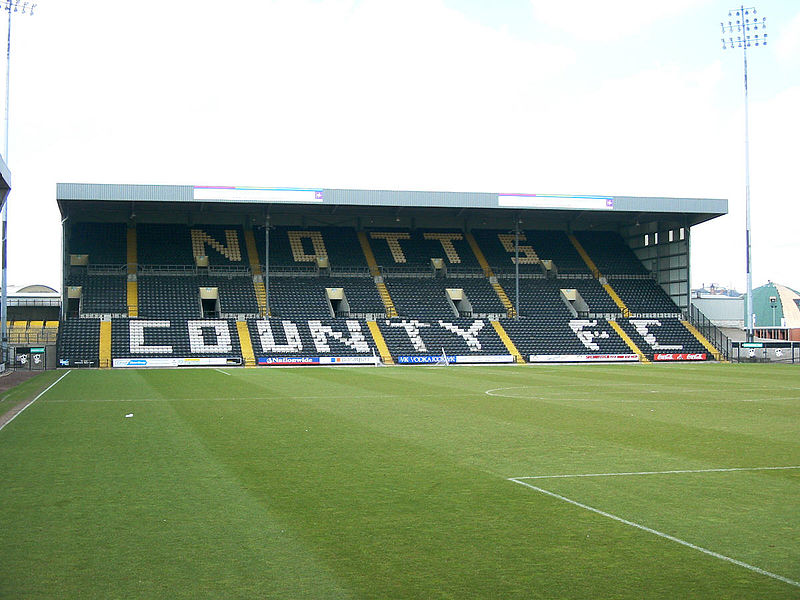“I hate it, it’s horrendous. It’s really, really horrible not having fans there, not having that atmosphere there.”
The words of Notts County boss, Neil Ardley, in a recent interview with Platform likely sum up the feelings of the vast majority of his peers in the National League. Despite the new season, which began on October 3rd, bringing some sense of normality, the absence of fans is both a huge moral and financial strain. Questions had circulated over whether the season would start at all, until a UK government support package guaranteed clubs would not be out of pocket from playing without the vital revenue stream that fans provide.
Government support for National League teams – rumoured to be around £2-3 million per month – does ensure the survival of the biggest clubs in non-league. Across the six steps of the non-league system (NLS), of which the National League is Step 1, grants have allowed clubs to use the extended football hiatus to improve facilities and ensure overhead facilities costs have been paid.
But whilst this support should not be overlooked, more attention is still afforded to the cost of Premier League pay-per-view prices, rather than the thousands of players, coaches and club volunteers that are on the frontline of football’s battle for survival at the lower levels. Government is in danger of leaving proper football behind, and more should be done to protect the sport at all levels of the game.
Fans are back! Well, some of them…
The loss of critical revenue streams has had a seismic impact on non-League clubs around the country, who until the start of the new season had not played competitively since March. In August, Dover Athletic Chairman, Jim Parmenter, said that all 14 of the club’s contracted players had been made available for transfer as the club desperately needed to cut costs. Although the club did recover, Parmenter originally predicted that they would fold by the end of the month without investment. It shows the precarious situation that is very much a reality for non-league teams.
Government grants will hopefully provide relief for Dover and others in the National League’s three divisions. But for those below that, the situation is bleaker. Last weekend, Belper Town faced Worksop Town in the Northern Premier League South East Division, at Step 4 of the NLS. The clash between the two teams sitting first and second in the table would usually bring in several hundreds of fans, and great financial reward for the host. But government restrictions meant only 400 fans could watch an end-to-end 2-2 draw at Belper’s Raygar Stadium, which has a maximum capacity of 2,500.
Whilst fan limits are logical, there is no other financial support available for clubs at that level. Whilst having fans back does provide revenue, should games be postponed due to a positive test result within a squad, revenue is lost with no means of replacement, and that is before facility and player costs are taken into account. It leaves clubs counting pennies as fears rise that football may not make it to Christmas, let alone May. Whilst fan restrictions or total fan bans exist, more should be done to support the clubs up and down the country who are dependent on fan revenue to survive.
The forgotten obligation of the powerful
Putting Project Big Picture aside for a minute, one does question what the nation’s most powerful clubs do for non-League football. As we await the return of fans to the professional game, many have found a more authentic and enjoyable football experience on a Saturday afternoon following their local teams, rather than watching the big leagues at home.
In the plans for the now-rejected Project Big Picture, £100 million had been pledged to the FA in lost revenue. Whilst that’s all well and good, as EFL Chairman Rick Parry pointed out, in 2018-19 Championship clubs received £146 million, partly made up of Premier League solidarity payments. The bottom 14 Premier League clubs received £1.58 billion.
Given the staggering amounts of money that the Premier League deals with, why, then, does the Premier League not do more to support the game at the lower levels? Speaking to the BBC last month, Darryl Eales, chairman of National League side Solihull Moors, said: “£25 million would ensure the survival of all clubs in the National League, National League North and National League South.” Indeed, Eales estimated clubs would be happy with just £500,000 in additional support to get them through the season.
It certainly appears that the most powerful in our game have little care for the leagues, clubs and people that form the very foundation of the English game. £25 million would, by Eales’ estimates, save the 66 clubs of the three National League divisions. How much more, realistically, would it cost to save hundreds more clubs in the NLS? Given the money the Premier League deals with, something tells me they’d be good for it.
Although this is by no means solely down to government to bring about this change, it has the power to put its foot down. If government is there to serve the majority, the Department for Digital, Culture, Media and Sport should do just that, and pressurise the richest in our game to help the poorest, and prevent more teams following the path of Droylsden FC, FC Owestry Town and possibly several others in the future from being lost forever.
Football certainly has the strength to survive, but only if it is given a helping hand. Without the fans who make up the core of our game, government and football’s richest should be wary of letting non-league football fall by the wayside.
By Callum Parke


